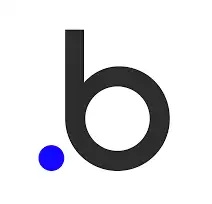Draftbit: a no-code builder for real native mobile apps
Draftbit is a specialized no-code platform focused on helping creators build fully functional native mobile applications without writing code. Unlike many other no-code tools that rely on web-based frameworks or progressive web apps (PWAs), Draftbit allows users to create apps that compile into real native code using React Native. This approach positions Draftbit as a powerful tool for startups, designers, developers, and entrepreneurs who want more control, flexibility, and scalability from their no-code mobile solutions. It bridges the gap between visual development and real production-ready output.
Design interface and development approach
Draftbit offers a visual, component-based editor that gives users granular control over the design and structure of their mobile applications. Instead of using restrictive templates, Draftbit allows complete customization through drag-and-drop elements and a logic-driven properties panel. Every screen, button, image, and layout element can be fine-tuned using a combination of visual tools and code-like configurations.
The platform uses a layout system inspired by CSS Flexbox, allowing experienced designers to manage complex interface hierarchies while remaining accessible to users with less technical knowledge. For more advanced users, Draftbit also exposes the underlying code logic, offering the ability to insert custom functions, use React Native libraries, or export the project for further development. This level of openness makes Draftbit unique among no-code platforms—it’s a visual builder with a clear path to full-code scalability.
Data integration and backend connectivity
Draftbit is designed to work seamlessly with external data sources, giving users the ability to build dynamic, data-driven applications. Through its built-in REST API connector, users can easily integrate backend services such as Airtable, Supabase, Firebase, Xano, or any other service that supports JSON responses. Data can be pulled into the app, filtered, displayed in lists, and used to trigger actions and interactions—all without the need for a custom backend.
Users can define variables, map endpoints to screen elements, and use authentication tokens to personalize app content. This makes Draftbit suitable for building applications that go beyond simple interfaces, such as CRMs, booking tools, inventory apps, and client portals. The flexibility to connect with nearly any backend gives Draftbit an edge for users who need tailored, production-ready workflows.
Logic, interactivity, and navigation
Draftbit supports conditional logic and user interaction workflows through its action system. Users can configure tap, swipe, or scroll events to trigger navigation, open modals, fetch data, or update variables. This interaction model allows app builders to create rich, responsive experiences that feel native to mobile devices.
Navigation is built using React Navigation principles, with stack, tab, and drawer navigators available through the interface. Users can define global app structure and transitions with ease, and more complex flows like user onboarding, deep linking, or authentication states are fully supported. Draftbit also allows previewing interactions live in a web-based viewer or through its mobile companion app, providing instant feedback during development.
Exporting, publishing, and developer handoff
One of Draftbit’s most defining features is its ability to generate clean, exportable React Native code. This means that users can start building their app visually and hand the code off to developers at any point, or continue development outside the platform. This flexibility is rarely found in no-code tools, which often lock users into a proprietary environment. With Draftbit, teams can begin fast with no-code and scale up to full-code as needed.
When it comes to publishing, users can either deploy directly to iOS and Android through third-party services like Expo or EAS, or export the full codebase and deploy manually. This flexibility makes Draftbit suitable for both prototyping and full product launches. Developers retain full control over performance optimization, code review, and custom logic while still benefiting from the speed of visual development.
User access, collaboration, and team workflows
Draftbit supports team collaboration through shared projects, roles, and live editing. Designers and developers can work together in real time, making it easier to iterate on app layouts, fix logic, or prepare assets. The platform also includes version control and staging environments, enabling teams to test changes before pushing them live. This makes Draftbit especially useful for agencies and development teams managing multiple clients or internal projects.
Because of its hybrid nature—somewhere between no-code and full-code—Draftbit fosters collaboration across technical skill levels. A designer can mock up screens, a PM can add content logic, and a developer can export and extend functionality—all within the same environment.
Pricing, scalability, and target audience
Draftbit’s pricing is geared toward professionals and teams who value design freedom and technical ownership. The platform includes a free tier for experimentation, with paid plans unlocking advanced API features, custom domains, source code export, and team management tools. Given the cost and feature set, Draftbit is best suited for startups, app design professionals, and technical marketers who want to move quickly without sacrificing long-term flexibility.
Bottom line
Draftbit is a unique player in the no-code space, offering users the power to build real native mobile apps without losing access to the underlying code. Its combination of visual design tools, flexible data integration, scalable logic, and production-grade export options makes it ideal for users who want both speed and depth. Whether you're building a quick MVP or preparing a polished mobile product for launch, Draftbit offers the creative control and developer-grade output to make it happen.







